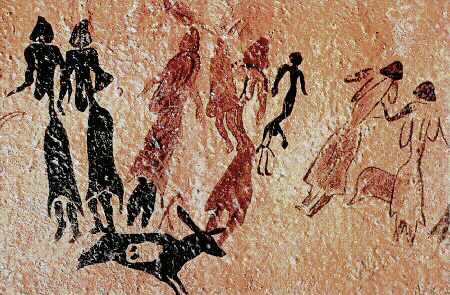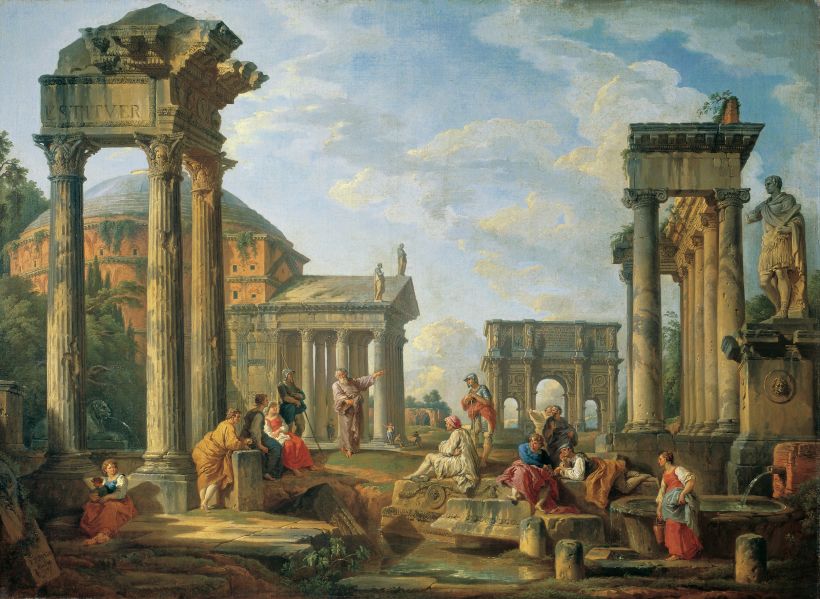|
Vilassar De Dalt Archive-Museum
The purpose of the Vilassar de Dalt Archive-Museum ( ca, Museu-Arxiu de Vilassar de Dalt) is the conservation and dissemination of the archaeological, architectural, historical, natural and cultural heritage of Vilassar de Dalt and its environment. Located in the Can Banús farmhouse, records for which date back as far as the 14th century, its main collection can be broken down into four categories: archaeology, textiles, history and the historic archive. Founded in 1961, the Archive-Museum is part of the Barcelona Provincial Council Local Museum Network and houses the Serralada Litoral Park Documentation Centre. Its collections are brought to the public as temporary exhibitions produced in-house and organised in sections: history, photography, textiles, natural sciences and archaeology. In addition, the Archive-Museum manages the archaeological site of the Roman ovens of the Fornaca The Roman ovens of the Fornaca are ancient Roman structures in the archaeological site of Fornaca a ... [...More Info...] [...Related Items...] OR: [Wikipedia] [Google] [Baidu] |
Catalonia VilassarDeDalt CanBanús Portal
Catalonia (; ca, Catalunya ; Aranese Occitan: ''Catalonha'' ; es, Cataluña ) is an autonomous community of Spain, designated as a ''nationality'' by its Statute of Autonomy. Most of the territory (except the Val d'Aran) lies on the northeast of the Iberian Peninsula, to the south of the Pyrenees mountain range. Catalonia is administratively divided into four provinces: Barcelona, Girona, Lleida, and Tarragona. The capital and largest city, Barcelona is the second-most populated municipality in Spain and the fifth-most populous urban area in the European Union.Demographia: World Urban Areas – Demographia, April 2018 Current day Catalonia comprises most of the medieval and early modern |
Archaeology
Archaeology or archeology is the scientific study of human activity through the recovery and analysis of material culture. The archaeological record consists of Artifact (archaeology), artifacts, architecture, biofact (archaeology), biofacts or ecofacts, archaeological site, sites, and cultural landscapes. Archaeology can be considered both a social science and a branch of the humanities. It is usually considered an independent academic discipline, but may also be classified as part of anthropology (in North America – the four-field approach), history or geography. Archaeologists study human prehistory and history, from the development of the first stone tools at Lomekwi in East Africa 3.3 million years ago up until recent decades. Archaeology is distinct from palaeontology, which is the study of fossil remains. Archaeology is particularly important for learning about prehistoric societies, for which, by definition, there are no written records. Prehistory includes ove ... [...More Info...] [...Related Items...] OR: [Wikipedia] [Google] [Baidu] |
Cultural Heritage
Cultural heritage is the heritage of tangible and intangible heritage assets of a group or society that is inherited from past generations. Not all heritages of past generations are "heritage"; rather, heritage is a product of selection by society. Cultural heritage includes cultural property, tangible culture (such as buildings, monuments, landscapes, books, works of art, and artifacts), intangible heritage, intangible culture (such as folklore, traditions, language, and knowledge), and natural heritage (including culturally significant landscapes, and biodiversity).Ann Marie Sullivan, Cultural Heritage & New Media: A Future for the Past, 15 J. MARSHALL REV. INTELL. PROP. L. 604 (2016) https://repository.jmls.edu/cgi/viewcontent.cgi?article=1392&context=ripl The term is often used in connection with issues relating to the protection of Indigenous intellectual property. The deliberate act of keeping cultural heritage from the present for the future is known as Conservation (cul ... [...More Info...] [...Related Items...] OR: [Wikipedia] [Google] [Baidu] |
Vilassar De Dalt
Vilassar de Dalt () is a village in Catalonia, Spain, in the province of Barcelona and the ''comarca'' of Maresme. The name comes from the Roman name ''Villa Azari'', later changed to ''Vilassar''. In the 20th century, it split into two villages: Vilassar in the hills (de Dalt), and Vilassar by the Sea (de Mar). Demography See also *Cau del Cargol The Cau del Cargol Shells of the World Museum is a museum containing a large private collection of shells; it is situated in Vilassar de Dalt (Catalonia, Spain). The collection includes over 16,000 worldwide species of mollusc shells, from marin ... Private Shell Museum with over 16.000 different species. References * Panareda Clopés, Josep Maria; Rios Calvet, Jaume; Rabella Vives, Josep Maria (1989). ''Guia de Catalunya'', Barcelona: Caixa de Catalunya. (Spanish). (Catalan). External links Official website Government data pagesHistoric and artistic heritage {{DEFAULTSORT:Vilassar De Dalt Municipalities in Mar ... [...More Info...] [...Related Items...] OR: [Wikipedia] [Google] [Baidu] |
Archaeology
Archaeology or archeology is the scientific study of human activity through the recovery and analysis of material culture. The archaeological record consists of Artifact (archaeology), artifacts, architecture, biofact (archaeology), biofacts or ecofacts, archaeological site, sites, and cultural landscapes. Archaeology can be considered both a social science and a branch of the humanities. It is usually considered an independent academic discipline, but may also be classified as part of anthropology (in North America – the four-field approach), history or geography. Archaeologists study human prehistory and history, from the development of the first stone tools at Lomekwi in East Africa 3.3 million years ago up until recent decades. Archaeology is distinct from palaeontology, which is the study of fossil remains. Archaeology is particularly important for learning about prehistoric societies, for which, by definition, there are no written records. Prehistory includes ove ... [...More Info...] [...Related Items...] OR: [Wikipedia] [Google] [Baidu] |
Textiles
Textile is an umbrella term that includes various fiber-based materials, including fibers, yarns, filaments, threads, different fabric types, etc. At first, the word "textiles" only referred to woven fabrics. However, weaving is not the only manufacturing method, and many other methods were later developed to form textile structures based on their intended use. Knitting and non-woven are other popular types of fabric manufacturing. In the contemporary world, textiles satisfy the material needs for versatile applications, from simple daily clothing to bulletproof jackets, spacesuits, and doctor's gowns. Textiles are divided into two groups: Domestic purposes onsumer textilesand technical textiles. In consumer textiles, aesthetics and comfort are the most important factors, but in technical textiles, functional properties are the priority. Geotextiles, industrial textiles, medical textiles, and many other areas are examples of technical textiles, whereas clo ... [...More Info...] [...Related Items...] OR: [Wikipedia] [Google] [Baidu] |
Barcelona Provincial Council Local Museum Network
The Barcelona Provincial Council Local Museum Network ( ca, Xarxa de Museus Locals), also known as ''Catalonia’s Biggest Museum'', is a tool for support and collaboration from and for the museums of the province, which makes available to municipalities a series of services and actions aimed at improving, through the provision of direct services and research into viable formulas for supramunicipal cooperation, the management, conservation and dissemination of heritage and the museum facilities of the towns of Barcelona province. It is managed from the Cultural Heritage Office, which in turn depends on the Department of Knowledge and New Technologies of Barcelona Provincial Council. It was started in 2001, the continuation of a collaboration effort established by the Local Museum Cooperation Committee, which was founded in 1988 in connection with the preparation for the 1st Conference on Museums and Local Administration. Its main objective is to work as a team toward a dynamic, vers ... [...More Info...] [...Related Items...] OR: [Wikipedia] [Google] [Baidu] |
Archaeological Site
An archaeological site is a place (or group of physical sites) in which evidence of past activity is preserved (either prehistoric or historic or contemporary), and which has been, or may be, investigated using the discipline of archaeology and represents a part of the archaeological record. Sites may range from those with few or no remains visible above ground, to buildings and other structures still in use. Beyond this, the definition and geographical extent of a "site" can vary widely, depending on the period studied and the theoretical approach of the archaeologist. Geographical extent It is almost invariably difficult to delimit a site. It is sometimes taken to indicate a settlement of some sort although the archaeologist must also define the limits of human activity around the settlement. Any episode of deposition such as a hoard or burial can form a site as well. Development-led archaeology undertaken as cultural resources management has the disadvantage (or the be ... [...More Info...] [...Related Items...] OR: [Wikipedia] [Google] [Baidu] |
Roman Ovens Of The Fornaca
The Roman ovens of the Fornaca are ancient Roman structures in the archaeological site of Fornaca at Vilassar de Dalt Vilassar de Dalt () is a village in Catalonia, Spain, in the province of Barcelona and the ''comarca'' of Maresme Maresme () is a '' comarca'' (county) located along the Catalan Mediterranean coast in Spain, between the ''comarques'' of Barce ..., Catalonia, Spain; they were dedicated to the industrial production of large ceramic materials. Basing on their typology, the materials found in the excavation, and study of their magnetic properties, archaeologists have dated the ovens 1 and 2 to the 1st and 2nd centuries AD. The name Fornaca, documented for the first time in 1290 at the castle of Speculum Vilassar, gives clues about the antiquity of the area of industrial production. Ancient Roman buildings and structures in Catalonia {{spain-hist-stub ... [...More Info...] [...Related Items...] OR: [Wikipedia] [Google] [Baidu] |
Maresme
Maresme () is a ''comarca'' (county) located along the Catalan Mediterranean coast in Spain, between the ''comarques'' of Barcelonès (at the Southwest) and Selva (at the Northeast), and also bordering with Vallès Oriental (at the west). Its capital and largest city is Mataró (pop. 119,035 in 2007). Geography Maresme occupies a long and narrow area between the Mediterranean Sea and the hills of Serralada Litoral (Catalonia's coastal mountains), and specifically Montnegre's and 's hills in the northern half and Sant Mateu's hills in the southern half. This particular shape has conditioned both the geography and the history of this ''comarca''. Probably the main distinct elements of its geography are the characteristic ''rieres'' (torrents). These short, intermittent streams, which cross the ''comarca'' transversally about every hundred meters, produce powerful and dangerous floods when it rains. Maresme has been historically very well connected with the rest of the ''com ... [...More Info...] [...Related Items...] OR: [Wikipedia] [Google] [Baidu] |
History Museums In Catalonia
History (derived ) is the systematic study and the documentation of the human activity. The time period of event before the invention of writing systems is considered prehistory. "History" is an umbrella term comprising past events as well as the memory, discovery, collection, organization, presentation, and interpretation of these events. Historians seek knowledge of the past using historical sources such as written documents, oral accounts, art and material artifacts, and ecological markers. History is not complete and still has debatable mysteries. History is also an academic discipline which uses narrative to describe, examine, question, and analyze past events, and investigate their patterns of cause and effect. Historians often debate which narrative best explains an event, as well as the significance of different causes and effects. Historians also debate the nature of history as an end in itself, as well as its usefulness to give perspective on the problems of the p ... [...More Info...] [...Related Items...] OR: [Wikipedia] [Google] [Baidu] |

.jpg)





.jpg)